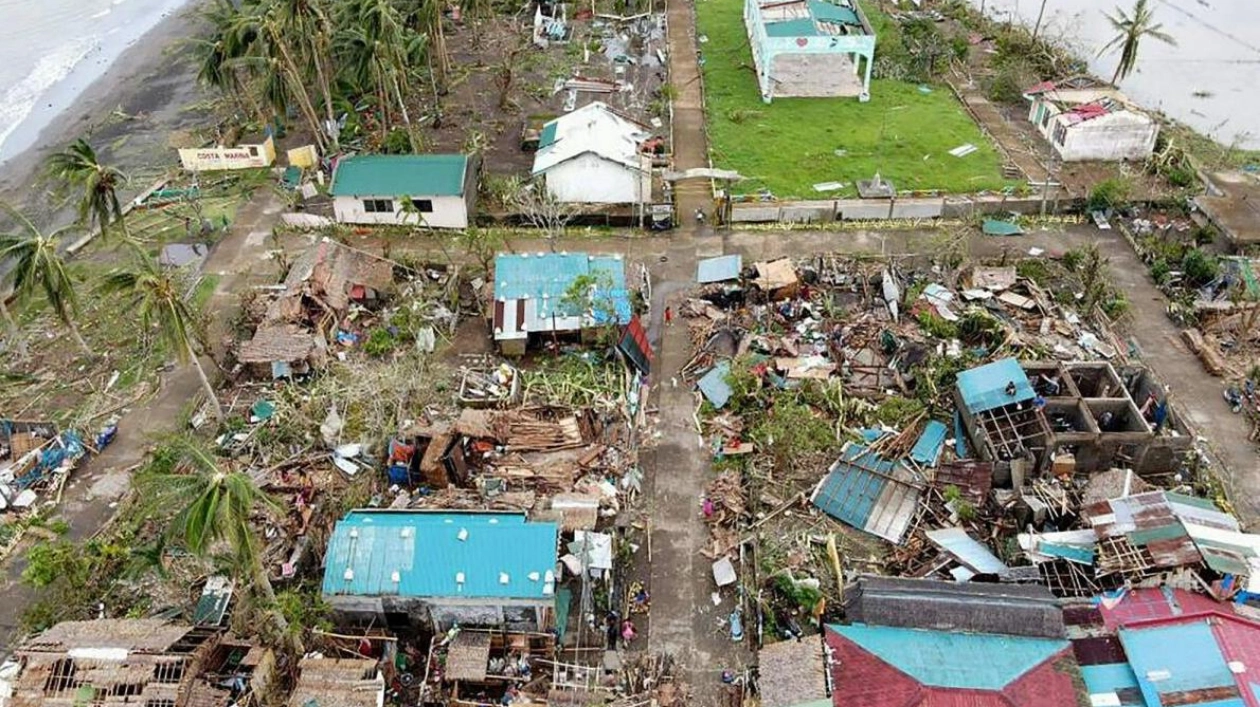Aerial footage reveals the devastation in Bacak village, Bagamanoc town, Catanduanes province, following the onslaught of Super Typhoon Man-yi. — AFP
On Monday, Filipinos began the arduous task of clearing fallen trees and repairing damaged homes after the sixth major storm in a month struck the Philippines, causing significant structural damage, power outages, and claiming at least eight lives. The national weather service had issued a dire warning of a 'potentially catastrophic' impact from Man-yi, which was classified as a super typhoon upon its arrival over the weekend. However, President Ferdinand Marcos reassured the public on Monday, stating that the situation 'wasn't as bad as we feared.'
With maximum sustained wind speeds reaching 185 kilometers (115 miles) per hour, Man-yi made landfall on Catanduanes island late Saturday and continued its destructive path onto the main island of Luzon the following afternoon. The typhoon uprooted trees, downed power lines, crushed wooden houses, and triggered landslides. Marcos, referring to Man-yi by its local name, Pepito, acknowledged the storm's strength but emphasized that the impact was less severe than anticipated. He outlined the government's immediate priorities, which include rescuing those in isolated areas and providing ongoing relief to displaced individuals who lack the means to prepare their own meals or secure water supplies.
The death toll from the typhoon has risen to eight, with a 79-year-old man in Camarines Norte killed when his motorbike was caught in a power line, according to police reports. In Nueva Vizcaya province on Luzon, a landslide buried a house, resulting in seven fatalities and three injuries, as confirmed by provincial disaster agency spokesperson Kristine Falcon. Power outages in the island province of Catanduanes could persist for months after Man-yi toppled electricity poles, according to provincial information officer Camille Gianan. Gianan highlighted the urgent need for food packs, hygiene kits, and construction materials to aid in the recovery efforts.
In the coastal town of Baler, Aurora province, cleanup operations are in full swing to remove fallen trees and debris obstructing roads and waterways. Disaster officer Neil Rojo noted that the majority of houses in the area are constructed from light materials, anticipating significant damage. Reports have also surfaced of roofs being blown away by the fierce winds, underscoring the storm's destructive force.
As Man-yi traversed the mountains of Luzon, it weakened considerably and was downgraded to a severe tropical storm as it moved towards Vietnam across the South China Sea on Monday. Over a million people in the Philippines evacuated their homes in anticipation of the storm, which occurred amidst an unusual series of violent weather events. Climate change is exacerbating the intensity of storms, leading to heavier rainfall, flash floods, and stronger gusts. In the past month alone, at least 171 people have died due to the storms, leaving thousands homeless and devastating crops and livestock.
The Philippines, a Southeast Asian nation, typically experiences about 20 major storms or typhoons each year, resulting in numerous casualties. However, it is uncommon for multiple such weather events to occur within a short timeframe. Man-yi also struck the Philippines later in the typhoon season, as most cyclones develop between July and October. Notably, this month witnessed four storms clustered simultaneously in the Pacific basin, a phenomenon observed for the first time in November since records began in 1951, according to the Japan Meteorological Agency.
Source link: https://www.khaleejtimes.com






